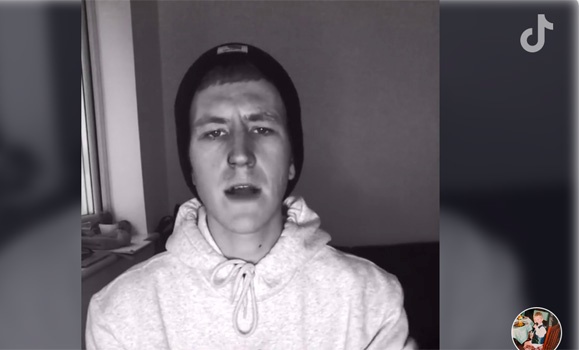Throughout the COVID-19 global pandemic, trends stemming from places all over the world have been captivating mass audiences through the popular video app TikTok. Sea shanties happen to be the latest craze, amassing millions of views and stirring up conversations across social media platforms.
The video that kicked off the renewed interest in sea shanties was posted by Nathan Evans, a young postman from North Lanarkshire, Scotland. In the TikTok post, he sings a shanty called “The Wellerman” that has drawn in more than 7 million views to date.
Emily Fenton is an MA student in the Department of History and specializes in English history and early marketplaces. Sea Shanties: Expressing Identity, Escapism, and Dissatisfaction, a paper she wrote for a class last year, focused on shanties in the Atlantic region between 1650 to 1800. We asked Fenton how sea shanties came to be, and her thoughts behind why they’ve become so popular all of the sudden.
So, what are sea shanties and where did they come from?
 Sea Shanties are essentially a simple tune sung by seamen or sailors that would coordinate heavy labour, like hauling oars or bringing up the anchor, basically any task on the ship that required many men. The songs were a form of expression for the sailors, while also allowing them to complete their jobs in a joint rhythm. Because the songs were sung on ships for utility they were not recorded so there is no specific date as to when they may have first come into existence. Through most of what we know, sea shanties came into popularity during the 1700s or 1800s, while ships were sailing the transatlantic trade routes. The name sea shanties and “shantying” is thought to come from the French word “chanter,” meaning to sing.
Sea Shanties are essentially a simple tune sung by seamen or sailors that would coordinate heavy labour, like hauling oars or bringing up the anchor, basically any task on the ship that required many men. The songs were a form of expression for the sailors, while also allowing them to complete their jobs in a joint rhythm. Because the songs were sung on ships for utility they were not recorded so there is no specific date as to when they may have first come into existence. Through most of what we know, sea shanties came into popularity during the 1700s or 1800s, while ships were sailing the transatlantic trade routes. The name sea shanties and “shantying” is thought to come from the French word “chanter,” meaning to sing.
The TikTok trend revolving around sea shanties involved people continuously adding to a duet chain of the original shanty video to harmonize, what are your thoughts on this modern-day version of shanties in the social media world?
It’s a cool revival of the folk songs. There was another revival in the 1980s and 1990s which brought forth a lot of the popular shanties we know now, such as “Barrett’s Privateers” by Stan Rogers. Shanties then were written in a way that somewhat romanticized seafaring times. The current TikTok trend is a nice way for people to come together. On the boats the songs allowed for keeping in time both literally and figuratively, helping the seamen work cooperatively but also represented a collective identity and experience. You can draw parallels to current times, though lacking the physical labour, we are in difficult times, and people like the idea of the shared experience. Shanties are almost always about endurance and waiting for better times as life on the boats was pretty grim and this can be compared to modern-day living amid a global pandemic.
Even Jimmy Fallon, host of The Tonight Show, did a rendition of a sea shanty with the lyrics to a popular song at the moment. Why do you think sea shanties are gaining so much attention as of late?
The simple nature of sea shanties allows for anyone to join and the more people involved, the stronger the song becomes making it the more the merrier. With TikTok, trends like these can reach the masses rather than be contained to just those present on the boat. Maybe the tunes are just naturally contagious, and with the accessibility of TikTok people can join in quickly. Hopefully, the trend stays popular because before the pandemic shanty festivals were held where big groups can gather to sing along in person!
Ask an expert: Emily Fenton on the sea shanty craze taking over TikTok
Darcy Gillespie - January 22, 2021

Nathan Evans performs "The Wellerman" on TikTok. (Screen grab/TikTok)
